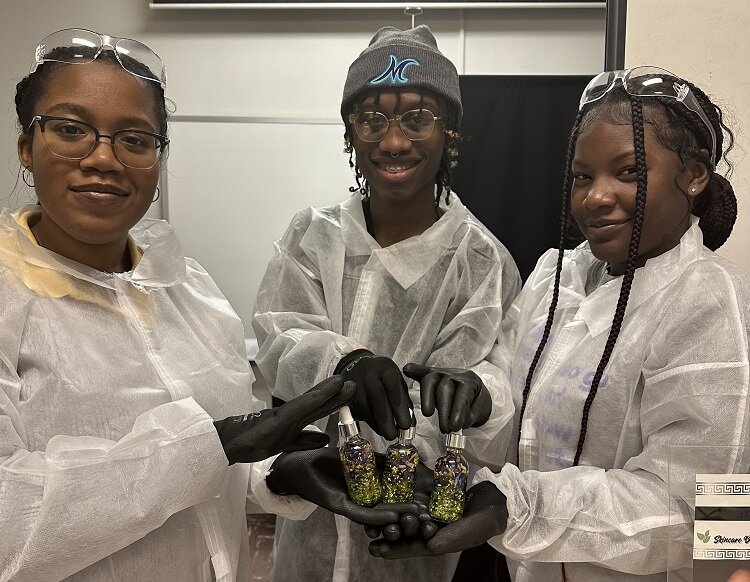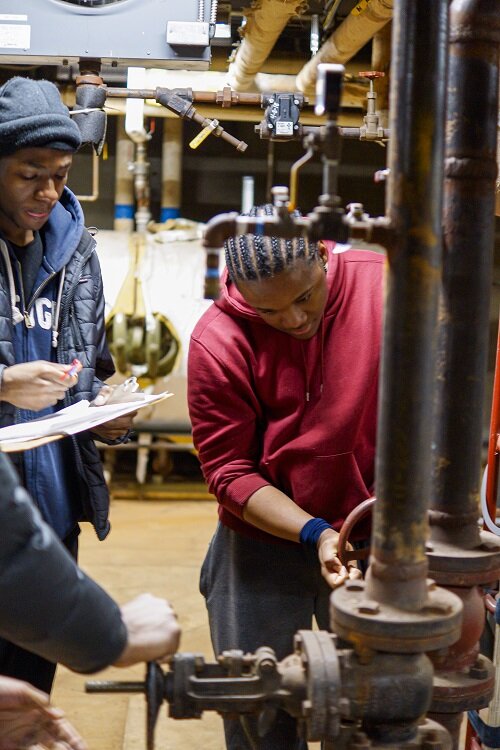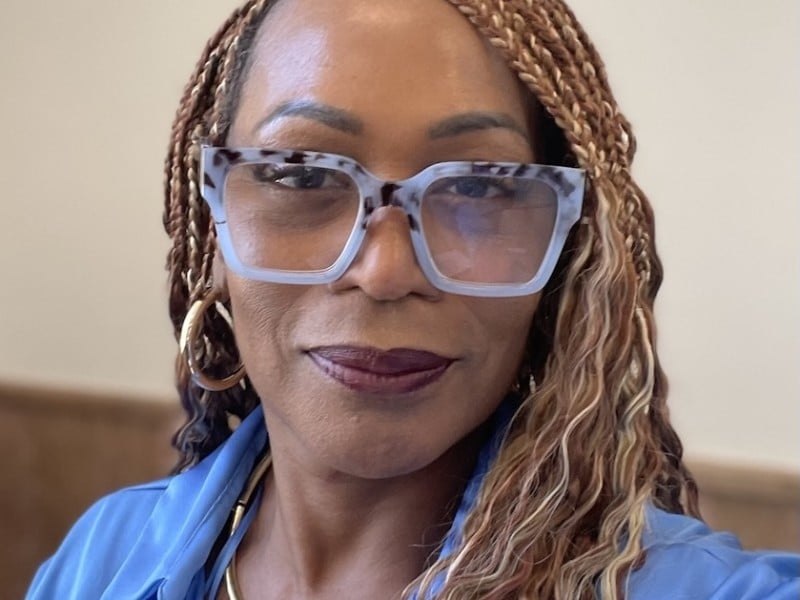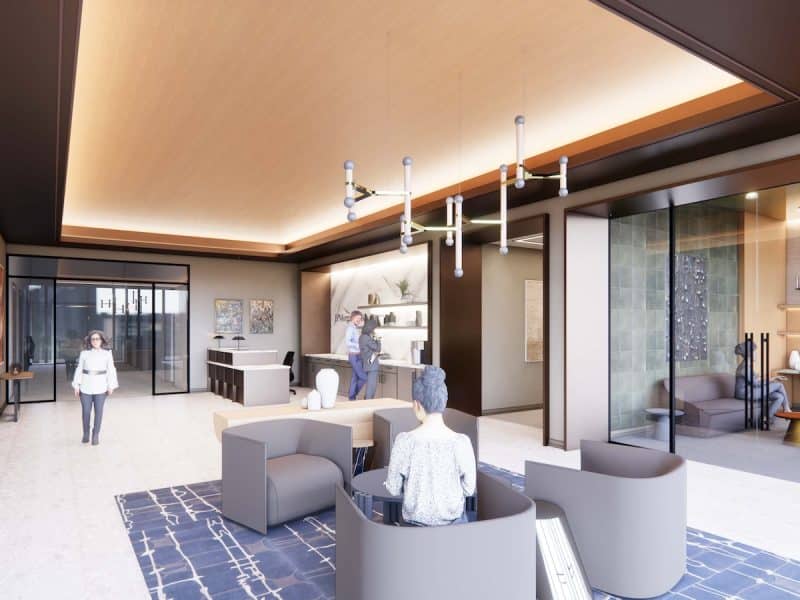Partner Partner Content Marygrove internships empower graduating students to design real-world solutions
How can engineers design for a more equitable community? It's these kinds of questions students at Marygrove are tackling as part of the powerful internship program.

This is part of a series, supported by The School at Marygrove, focusing on the work happening on the campus and in the community.
When Marygorve’s introductory ninth-grade class stepped on campus in 2019, the progression from teenagers to critical thinkers and community-minded citizens officially began.
The transition has been driven by a four-year project- and place-based engineering and design curriculum (co-developed by the DPSCD and the University of Michigan School of Education) that allows students to determine, collude, and solve complex problems, and engage in the creation of a more just and equitable future.
Central to that curriculum is the student internships required for the 95 graduating seniors in 2023. They get to apply their classroom learning to real-life problem-solving in internships that have two parts. In the first part, students work at an internship site within Marygrove’s campus with the school itself or with one of their many partners who operate onsite. Students are required to work two days a week for four weeks, for a total of 12 hours.
The second part of the internship is a design project called the Capstone Project. They propose a project to improve the internship site and meet with stakeholders and spend some additional days at the internship site to implement their ideas.
For Pheonyx Walker, who plans to become a child and adolescent therapist, the internship has provided valuable skills for her future profession.
“So far, I’ve learned how to talk to students that are in distress,” Walker says. “Some students just need a listening ear, and don’t necessarily need advice.”
“This internship has allowed me to be more in touch with other people’s emotions and feelings, and I’ve been able to use the experiences I’ve had in my four years of high school to help those who are still adjusting to life in high school.”
Hunter Janness, a teacher overseeing the internship project at The School at Marygrove (TSM), says the initiative has been in the works since the school was founded four years ago and actually comes out of the engineering curriculum sequence.
“The school itself is centered around the ideas of engineering and social justice,” he says. “Asking questions like, ‘How can you, as an engineer, design for a more equitable community?’ Part of that vision was the students taking four years of engineering; that fourth year would include this internship, and not only would they be placed with organizations in the traditional sense, but they would also use their engineering and design skills to propose and implement some sort of product, process, or experience that will benefit their placement in some way.”

The students are given field-of-interest surveys so they can be placed on projects that appeal to their current and future interests and career goals. Once they receive their designated workplaces and positions, they are then assigned mentors who coach and guide their projects.
“The first phase is traditional where they go to their placement and engage in projects that are laid out for them by their mentors,” Janness says.
“The later phases are the processes they use in the engineering framework we’ve been teaching them for the last four years to identify a problem, scope it out, and design an impact solution.”
TSM has a plethora of nonprofit and for-profit entities that operate on its campus. This has opened the doors for a wide variety of internship possibilities in which the students don’t necessarily have to leave TSM premises.
“It’s only possible because we’re on TSM’s campus. The diversity of people and organizations on this campus is what affords us the opportunity of finding these diverse opportunities for these students,” Janness says.
In Starfish’s early childhood center, there are a group of interns using their own engineering skills to teach preschoolers how to design their own toys. There is also another group at Starfish making a video about their childhood and family services.
“Our placements are going to give our students opportunities that no other students in the district or in the city will have a chance to explore while still in high school,” he says.
Currently, there are interns working on campus beautification with the IHM Sisters (who founded the college and still live on campus), there’s a team with Youth Tank focused on small business incubation, and a group at JOURNi who are focused on tech. There are three interns even working in an outdoor classroom space, researching the maximization of carbon mitigating potential, as well as land use effects and climate change.
“We have students with Luxe Alchemy, which is a skincare brand”, Janness says.
“They have a few different focus areas, a couple of our teams are more focused on the creation of the products themselves, and another team is like a business and marketing team. So they’re learning small business ideas from the founder of Luxe.”
James Shanks is an aspiring screenwriter who has a video production internship with Starfish Family services.
“I think the experience will help me in the future by helping me know how TV shows and videos are produced,” Shanks says.
Sha’Cari Fleming-Brown is uncertain of her career path but working with Human Fliers in her internship to create a TSM student-led show/podcast.
“This experience is opening so many doors for me,” Fleming-Brown says. “As someone who isn’t entirely sure about what they plan to do in the future, getting to work as a producer for a show has given me more ideas on what I’d be interested in doing.”
“It’s a chance for our students to authentically engage in the community in a meaningful way,” Janness says. “Learning without authentic outcomes oftentimes is less effective. And in this case, they’re actually using the skills they’ve been taught and having to apply them in a way that’s meaningful.”
Because internships are mandatory in most college curriculums, Marygove

students will have familiarity and be able to transition into those roles much easier post-high school. Students will also have experience having to work towards completing a project goal for their employers once they enter the workplace.
“The goal for each team is to present something to their client that’s going to leave them better off than they were before they started their internship,” he says.
Plans are for the twelfth-grade Engineering Internship and Capstone Project to be a mainstay at TSM for all future senior classes. Because TSM is still under development, Janness also sees the internship as an opportunity for students to leave their own footprint.
It’s not the only way students are making their mark. Students are working with the campus property management team and BDC Consulting, who are directly involved in campus development.
“There is still a lot of work to do on the campus and this is a chance to leverage all the talent we have amongst our students and give them a chance to leave a legacy for future generations of our students.”
Students will display their capstone projects at The School at Marygrove from 2 – 4 p.m. on May 4, 2023. As an application school, the TSM is currently taking enrollments.





